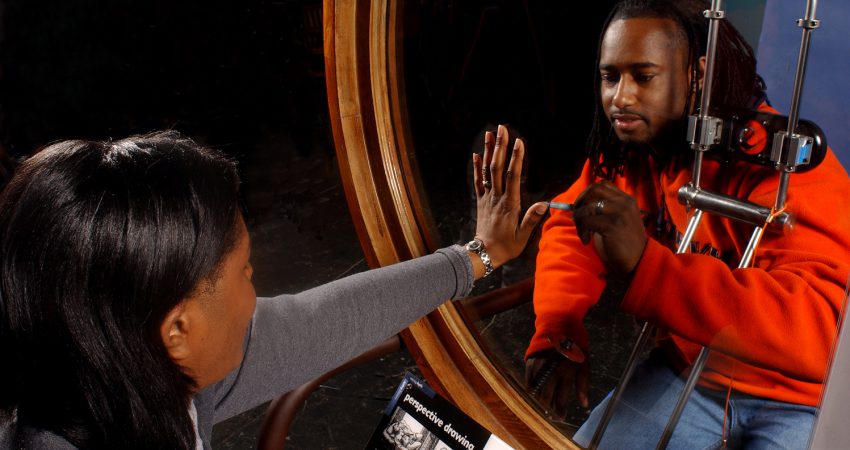
By Jean J. Ryoo - May 2015
PAPER CITATION
Kumpulainen, K., & Sefton-Green, J. (2012). What is connected learning and how to research it? International Journal of Learning and Media, 4(2), 7–18. doi:10.1162/IJLM_a_00091
Learning happens across time and space as people navigate different social contexts, such as school or home. With the advent of new technologies, learning occurs in increasingly complex ways that are not limited to schools. Meanwhile, 21st-century learning requirements emphasize such complex skills as critical thinking and new media literacy. Educators and researchers are recognizing that fostering such learning solely in classrooms can be challenging or even impossible.
Kumpulainen and Sefton-Green offer “connected learning” (Ito et al., 2013) as a holistic approach to understanding how learning involves crossing social spaces, practices, and time. The concept of connected learning focuses on increasing access to meaningful learning experiences that are socially embedded, interest driven, and oriented toward educational opportunity. It emphasizes the ways in which learners can be supported in linking their interests and funds of knowledge across personal, academic, civic, and career-related arenas.
Although scholars and educators both recognize a need to bridge youths’ learning in their personal lives with learning in school, they don’t necessarily understand how youth make meaning across activities, settings, and spaces. Furthermore, current methods of assessing learning based on standardized testing are too narrow to document the rich processes of learning that occur on the way to the results of learning.
To address these challenges, the authors offer three ways of describing, defining, and analyzing how youth make learning connections across traditionally separated life contexts.
Research Findings
The authors suggest using the following methodological concepts to capture the dynamic movement and duration of learning. The goal is to understand individuals’ learning processes holistically through their discourse, or what they say and write.
- “Chronotopes”—literally, “time-spaces”—is a term that describes how people speak or write about time and space in ways that reveal their worldviews or ideologies. Chronotopes of learners’ discourse have been used in educational research to interpret how their sense of agency and identity as doers of science shifts across experiences, relationships, and time spans.
- Boundary crossing refers to applying learning from one context to another. Attention to boundary crossing can reveal, for example, how learners identify relationships among different scientific practices across settings, create cooperative exchange among practices between settings, expand their perspectives about these practices, and co-develop new practices.
- “Intertextuality” is a term describing how people make references to or juxtapose different texts and ideas across contexts. Attention to how learners speak, write, and act upon ideas in different ways, as well as how intertextuality is or is not recognized and given social significance, can illuminate, for example, how learners construct science-related explanations when drawing on previous experiences, other learners’ ideas, and their own ideas about what it means to “do science.”
Theoretical Basis
This work builds on sociocultural perspectives that define learning as engagement in social practices influenced by the use of cultural artifacts. Culture is defined as the funds of knowledge and practices people draw upon to make sense of and participate in their social and material worlds. Furthermore, learners exist in a “social ecology” of multiple learning contexts—both formal and informal—that can both overlap and remain separate (Barron, 2006). Each context consists of unique combinations of relationships, resources, activities, and interactions.
Implications for Practice
This article on connected learning and how to document it across time and space through chronotopes, boundary crossing, and intertextuality is directed to researchers. Understanding the ways in which youths’ talk can demonstrate movement of ideas across contexts is useful for researchers who want to illustrate what learning looks like.
However, this approach can also be useful for in- and out-of-school educators. Understanding how students make meaning of their experiences across learning environments can help educators and program designers better organize activities to support diverse learners. Using these methodological concepts to acknowledge youth experiences across time and space, educators may engage a wider variety of students in 21st-century learning. Also, paying attention to how students’ identities shift through activities, how students cross experiential and learning boundaries, and how students compare or contrast ideas in different contexts can enrich educators’ formative and summative assessments. Deeper understandings of what students are learning may emerge when educators focus on youth talk and engagement with peers.
References
Barron, B. (2006). Interest and self-sustained learning as catalysts of development: A learning ecology perspective. Human Development, 99, 193–224.
Ito, M., Gutiérrez, K., Livingstone, S., Penuel, B., Rhodes, J., Salen, K., Schor, J., Sefton-Green, J., & Watkins, C. (2013). Connected learning: An agenda for research and design. Irvine, CA: Digital Media and Learning Research Hub.




